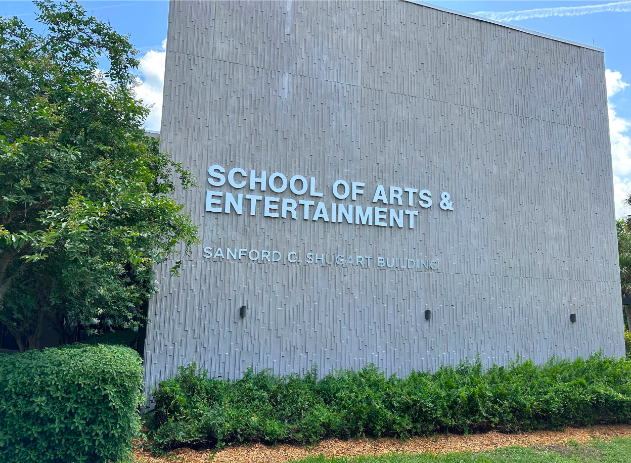Is Ballet An Art and a Sport?
October 4, 2022
Ballet is an inclusive environment that anyone can appreciate participating in. Human beings participate in different activities for entertainment and recreation. These activities are majorly divided into arts and sports. The sport involves activities that exert physical strain on the participants and skills to compete as an individual or a group. Some of the most famous sports in America are baseball, basketball, and football. On the other hand, art describe activities that focus on the portrayal of information. Art is like a communicating device where information is coded in a way that needs analysis to show meaning. This could be paintings, films, or plays.
Ballet cannot be defined as one or the other because it contains both aspects of art and sport. Thus, it should not be limited to the definition of one when its performance offers both elements of sport and art for participants and the audience. Research shows that the procedures involved in ballet preparation and presentation qualify it as an art and a sport because of the physical and choreographic demands it puts on the participants.
First, sport and art require evolving study methods for participants to accumulate the content and perform at their absolute best. It is not just the practical bit but also theoretical work to understand the basis of different approaches in sport and art. Ballet has this feature as well. The ballet pedagogy is constantly evolving to accommodate different types of students. The learning methods are also innovated to include modern teaching tools so participants can learn the performance and understand the significance of each step. For instance, in a 2020 edition of Turkish Online Journal of Distance Education, University of Jordan Manal Bayyatt submitted “Blended Learning: A New Approach to Teach Ballet Technique for Undergraduate Students“. In it, Bayyatt states, “Ballet has adopted blended learning in universities to teach undergraduate students. This mode is beneficial for performers and incorporates motivational techniques to attract new students to the discipline”. The method makes ballet more addictive to participants, so they keep the urge to keep training and performing. Like many sports, the curriculum is addictive to keep participants interested. Art is the same as learners keep refining their skills to be better every day through intensive learning and research. Ballet is both an art and a sport.

The importance of teaching styles is further illustrated by Rory Foster’s 2010 book “Ballet Pedagogy: The Art of Teaching” According to Foster, ballet teachers should focus on how to teach rather than what to teach. The teaching method determines the interest of participants. Most participants in sport and art already have basic ideas of what the discipline is about. If it is football, they know it is about juggling the ball and scoring. If it is a film, they know it involves editing and choreography to capture scenes perfectly. However, practically doing these activities greatly depends on how the participant or student was drilled. The methodology should respond to the students’ needs for them to be eager with the discipline. Foster describes several teaching methods, including the sing methodology. The discipline’s wide range of teaching methods allows instructors to adopt those that students connect with more reasonably. These are sports philosophies, where every trainer uses particular evidence-based designs to teach their athletes. It is also present in visual and performing arts as instructors use pedagogical tools that best respond to their student’s needs and the environment. Hence, the ballet teaching techniques represent both art and sport, which is student-centered to ensure the best outcomes.
Third, the sport requires particular physiological traits to be successful. There has been rapid research on sports to ensure the best players with specific features are recruited and developed early. This ensures athletes reach their prime as early as possible, join competitive competitions, and increase their performing lifespan. Eivind Thomasen’s 1996 “Anatomy and Kinesiology for Ballet Teachers” describes the body parts responsible for successful ballet professions. Thomasen breaks down the human body, analyzing each body part’s functions in ballet performance. These are the joints, muscles, and bones that facilitate ballet practice. While everyone can have a go at ballet, specific features are an added advantage, just like a bigger wingspan in swimming or height in volleyball. Like in any other sport, these characteristics are developed, and the participants are guided to use them to their advantage, hence more success in competitions. Art is also selective, with particular roles requiring specific traits. A female runway model would need at least 5’8″ in height to be more successful, and a character in a movie or film would need specific physical needs to deliver the message effectively. Thus, like a sport and an art, ballet also has physiological advantages for some people.

Innovation and technology in sport and art have also increased the personal assessment and training of individuals. This helps in development, as the student can learn and perfect specific skills independently and get real-time analysis that tells them where to improve. Such is ballet with the introduction of artificial intelligence (AI). Milka Trajkova’s “Towards AI-Enhanced Ballet Learning” posted in the 2019 Proceedings of the 6th International Conference on Movement and Computing analyzes the significance of using AI videos to assess ballet dancers. The study found that AI videos and assessment tools significantly improved performance for teachers and students. Teachers gain the effectiveness of their teaching methods and can write algorithms for real-time student assessment to save assessment time. On the other hand, students can assess themselves in real-time and know where to improve before the actual performance. These tools are vital both in sport and art. Self-assessment helps participants to quickly adapt to changes when alone to perfect their performance in sport and art. Ballet borrows on both aspects as the choreography and dance routines are artistic, while the physical fitness and flexibility aspects are sport-oriented.
People who classify ballet specifically as art borrows on the idea of choreography. Ballet is a highly choreographed dance routine that tells a story through the moves accompanied by music. The choreography is artistic, hence the common assertion for ballet just as art. However, such individuals disregard the physical aspect of the discipline, making it more sport-oriented. Ayşe Gül Uygur et al. studied the physical aspect of ballet, citing why some students are rejected in universities to pursue the course. In “The Physical Features Suitable for Classical Ballet Training” from the 2019 edition of Journal of Back and Musculoskeletal Rehabilitation, Uygur says, “Ballet requires mesomorph body types for effective ballerinas”. Mesomorph bodies are individuals with naturally lean, strong, compact, and athletic bodies. The reason for this is that mesomorphs gain and lose weight more efficiently than any other body type. They also develop muscles much more quickly, which are vital for the muscular strength of ballerinas. This is because ballet is brutal on the body, so most ballerinas end their professions early. Ballet is physically demanding on the body like any other sport, requiring tough body fitness to maintain the tempo. Also, ballet is as mentally tough on the individual as other sports. Ballerinas must perform as required despite fatigue. They build physical and mental endurance to perform at high levels and win competitive events. Hence, looking at it from the physical fitness point of view makes it more of a sport than it is an art.
What qualifies ballet as an art is the choreography involved. Participants must perform in highly choreographed patterns to earn the desired marks. This artistic aspect has taken the limelight over the hours of training that ballerinas have. It also underestimates the competitive nature of the sport on the physical element that exhausts participants and keeps them physically fit. In her book “The Art of Teaching Ballet: Ten Twentieth-Century Masters”, Gretchen Ward Warren includes interviews with different ballet teachers and her own experience as a ballet dancer. Warren unearths the demanding physical aspect of the sport that is often overlooked. Ballerinas need expert physical trainers to ensure their bodies are ready for exercise to avoid injuries, especially foot injuries that could end their careers. Thus, focusing on the artistic bit alone does not fully describe ballet, a sport requiring physical and mental toughness, and the choreography to earn higher ranks.
Ballet is both an art and a sport because of the preparation participants require to perform at their absolute level. Teaching pedagogies and tools incorporate both artistic and sport-based designs to ensure students remain interested and understand the concepts before practically performing. Ballet learning is also holistic, covering both the physical demands and the choreography nature of the discipline. While some view it as art only, the discipline also qualifies to be a sport due to its physical and mental endurance demand like other sporting codes. It also is highly competitive, putting different competitors against each other to determine the best. Teachers should adequately prepare students to be successful ballet dancers by using evidence-based teaching methods to keep the art and sport growing. More importantly, it is not just an art but also a competitive sport like any other.





